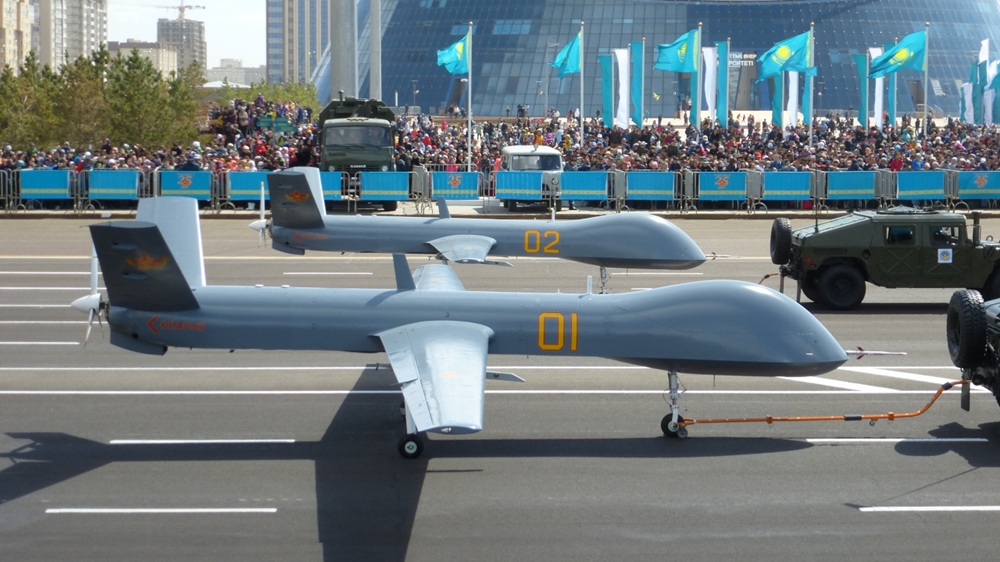The drone race is also spreading to Central Asia
The five countries in the region are increasing their purchases of these devices, which are increasingly used in conflicts, from Turkey, China, Russia, and Iran, and are opening their own production lines in agreement with foreign partners. Suspicions of triangulation that would allow Russia to be supplied while circumventing sanctions.
Astana (AsiaNews) - Central Asian countries are intensively acquiring unmanned aircraft technology, importing military and dual-use drones from Turkey, China, Russia, and Iran, and opening their own production lines in agreement with foreign partners. Most of these projects are still in their infancy, but experts warn that this is a very significant turning point for the region's military potential, which could transform Central Asia into a strategic hub for circumventing sanctions and playing the geopolitical game.
Until ten years ago, the use of drones in military operations was limited to a small group of countries, such as the United States, Britain, and Israel. Today, these aircraft have become a crucial element in armed conflicts around the world, playing a decisive role in the clashes in the Gaza Strip.
Today, these devices have become a crucial element in armed conflicts around the world, playing a decisive role in the clashes in the Gaza Strip, Lebanon, and Syria, not to mention the war between Russia and Ukraine, where drones have caused more casualties than any other type of weapon. Most drones are operated by human operators, but often the decision to take out targets is made by artificial intelligence, and there is debate about the need to ban these variants internationally.
As Michael Hilliard, director of the Oxus Society, the military analysis center for Central Asia, states, until the recent conflicts, only three of the five Central Asian countries had the resources necessary to use fixed-wing aircraft, relying largely on surplus Soviet helicopters, considering that “aircraft are extremely expensive, while drones have completely changed the picture.”. Kazakhstan has the largest fleet of these aircraft and is now capable of building its own drones, in addition to importing them. Kyrgyzstan also has a significant arsenal, while Tajikistan has Russian, Chinese, Iranian, and even American drones.
The most ambitious plans in this field have been announced by Uzbekistan, which has recently imported large numbers of drones from all available markets, mostly for dual civilian and military use, some under commercial contracts and others under international cooperation agreements. Tashkent does not have the same level of infrastructure as Kazakhstan, but it has expressed a strong political and strategic will to create a specific branch for unmanned aircraft, as Hilliard assures us.
Military trade and production analyst Derek Bisaccio believes that the greatest success in this market is attributable to Turkey, which supplies Bayraktar TB2 drones to Turkmenistan, Kyrgyzstan, and Uzbekistan, while in Kazakhstan it mainly exports Anka drones for various purposes, produced by Turkish Aerospace Industries. Tajikistan is the only one of the five countries in the region that does not purchase drones from Turkey, and in any case it is difficult to determine precisely the figures for these deals and the size of the arsenals, which are not disclosed by the various governments.
For domestic production, Central Asian countries are following Russia's example, which purchased the Shahed-136 kamikaze drone technology from Iran, opening intensive production lines under a new name, Geran-2, widely used in attacks against targets in Ukraine. The agreement for these models between Kazakhstan and Turkey dates back to 2022, and after the necessary training, production began in 2024 in the southern city of Taraz, but according to the limited data available so far, no actual results have yet been achieved.
In January 2025, it was announced that the Chinese company Yesil Technology had invested million in Kazakhstan for the production of drones for agricultural work, in exchange for purchases of raw materials to create a ‘circular ecosystem’, developed by the activity of 300 drones per month. According to Hilliard, this ‘system’ could be one of the ploys to get more drones into Russia while avoiding sanctions, fuelling the ‘circulation of war’.







.png)










